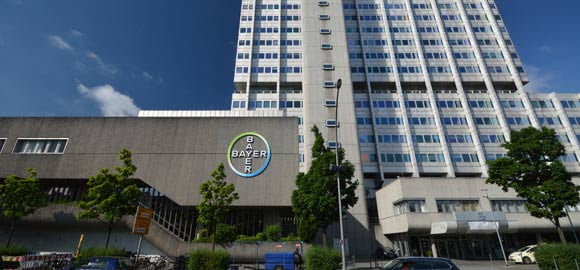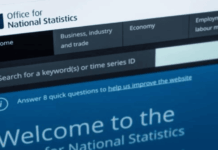Monsanto Argues Roundup Cancer Victim Should Receive Less Money Because of Imminent Death

By Joseph Mercola,
STORY AT-A-GLANCE
- August 10, 2018, a jury ruled in favor of plaintiff Dewayne Johnson in a truly historic case against Monsanto. Jurors found Monsanto was responsible for “negligent failure” by not warning consumers about the carcinogenicity of Roundup
- The jury ordered Monsanto to pay $289 million in damages to Johnson, $33 million of which was for noneconomic pain and suffering. In October, the judge upheld the guilty verdict but reduced the total award to $78 million
- Bayer/Monsanto appealed. In its appellate brief, the company asks for reversal of the damages awarded based on the fact that Johnson is near death
- Recent research shows glyphosate has multi-generational effects. Pregnant rats exposed to half of the no-observed-adverse-effect-level of glyphosate established by the European Food Safety Authority between the eighth and 14th day of gestation had offspring with higher rates of birth defects, obesity, and diseases of the kidneys, prostate, testes, ovaries and mammary glands (breasts)
- Third generation males had a 30% higher rate of prostate disease than the controls, while third generation females had a 40% higher rate of kidney disease. Cancer increased in second-generation rats but not in the first and third generations
August 10, 2018, a jury found Monsanto (now owned by Bayer AG1,2) had “acted with malice or oppression” and was responsible for “negligent failure” by not warning consumers about the carcinogenicity of its weed killer, Roundup.3,4 The plaintiff in this historic case was 46-year-old Dewayne Johnson, who is dying from Non-Hodgkin lymphoma.
Johnson sprayed about 150 gallons of Roundup 20 to 40 times per year while working as a groundskeeper for the Benicia Unified School District in California, from 2012 through late 2015.5 His lawsuit, filed in 2016 after he became too ill to work, accused Monsanto of hiding the health hazards of Roundup.
The jury ordered Monsanto to pay $289 million in damages to Johnson, $33 million of which was noneconomic damages for pain and suffering. In October, the judge upheld the guilty verdict but reduced the total award to $78 million.6,7,8
Monsanto/Bayer Wants Damages Reduced on Grounds That Plaintiff Is Near Death
As expected, Bayer/Monsanto appealed. What’s shocking is the company’s argument for significantly reducing the damage amount further. In its appellate brief,9 the company asks for reversal of the damages awarded based on the fact that Johnson is near death. On page 87, the appeal states:10
“A jury may award future noneconomic damages only for pain and suffering that a plaintiff is reasonably certain to experience based on his ‘projected life span at the time of trial’ …
[‘[D]amages for future pain and suffering are based upon plaintiff’s probable life expectancy in his or her injured condition … [C]ompensation for pain and suffering is recompense for pain and suffering actually experienced, and to the extent that premature death terminates the pain and suffering, compensation should be terminated’] …
An award is excessive if it ‘suggest[s] the jury was influenced by improper considerations’ … At closing argument, Plaintiff’s counsel ignored these principles. He implored the jury to award $1 million per year for both past and future noneconomic damages, and asserted that Plaintiff ‘will live between two more to 33 years.’
In so doing, Plaintiff’s counsel urged the jury to disregard the evidence presented through his medical expert, Dr. Nabhan, that Plaintiff would not live past December 2019, or roughly one and a half years after trial …
He then asked for $33 million in future noneconomic damages: ‘[I]f he lives for only two years, then the remaining years that he doesn’t get to live is also a million dollars. So it doesn’t matter if he dies in two years or dies in 20 … [H]e deserves that money’ … [asking jury to award $33 million in future noneconomic damages based on Plaintiff’s ‘potential life expectancy over the years he won’t live’ … ]).
And the jury awarded Plaintiff exactly what his lawyer requested: $33 million in future noneconomic damages … The court posed two questions for the parties to address at argument:
‘Is the $33 million award for future non- economic damages based on Plaintiff’s argument to award $1 million for each year of lost life expectancy? If so, is this award improper as a matter of law?’ Yet the trial court declined to follow this line of inquiry to its inevitable conclusion …
Dr. Kuzel also suggested that Plaintiff ‘could be cured of this disease and live his normal life expectancy.’ But even under this hypothetical … the jury had no basis to award damages for pain and suffering occurring after Plaintiff was cured … In sum, the court should reverse the award of future noneconomic damages because that award is not supported by the evidence of Plaintiff’s projected life expectancy at the time of trial.”
The company is essentially guilty of killing Johnson 33 years before his time, if you assume he’d have a normal life span of 79, and now Bayer wants reduced damages because he’s only got less than two years to live! It’s a new low even for Monsanto, and clear proof of the company’s callous disregard for human life.
Second Lawsuit Ends in Guilty Verdict and $80 Million in Damages
March 19, 2019, a U.S. jury ruled Roundup was a substantial causative factor in the cancer of a second plaintiff, Edwin Hardeman.11,12 Judge Vince Chhabria had approved Monsanto’s motion to divide the trial into two phases, the first phase limiting evidence to that relating to causation only.
In the second phase, jurors heard evidence related to liability. March 27, 2019, the jury found Monsanto had acted with negligence and awarded Hardeman $80 million in damages, including $75 million in punitive damages.13
A third case against Monsanto (Stevick et al v. Monsanto) was originally slated to go to trial May 20, 2019. However, Chhabria recently vacated the trial date and ordered Monsanto/Bayer to begin mediation with all remaining plaintiffs in the federal multidistrict litigation overseen by him — some 800 in all.14 Aside from these, Monsanto faces roughly 11,000 additional plaintiffs who claim Roundup caused their Non-Hodgkin lymphoma.15
Plaintiffs Request Restraining Order Against Monsanto Advertising
In another Roundup trial, this one in Alameda County Superior Court of California, a married couple, Alva and Alberta Pilliod, claim they both developed Non-Hodgkin lymphoma after regular use of Roundup. As reported by U.S. Right to Know (USRTK):16
“Plaintiffs’ attorney Mike Miller asked judge Winifred Smith to issue a temporary restraining order against Monsanto for heavy advertising the company has been doing in defense of the safety of its herbicides, including a full-page ad in the Wall Street Journal on March 25, the day the voir dire for jury selection in the Pilliod case began.”
Monsanto’s legal team countered saying The Miller Firm has engaged in its own ad campaign in an effort to add more clients for its Roundup litigation. The firm also published an ad in the San Francisco Chronicle seven days before the Pilliod case began, in which they claimed Roundup exposure could double or triple the risk of Non-Hodgkin lymphoma.
Monsanto also argued 2,187 anti-Roundup ads have aired on TV and radio between December 1, 2018 and March 21, 2019 in the San Francisco market. In the end, Judge Smith denied the plaintiffs’ request to stop Monsanto from advertising Roundup as having 40 years of safe product use and science proving its safety.
Monsanto Documents Reveal Close Relationship With Reuters Reporter
In related news, documents unearthed during the many lawsuits against Monsanto (colloquially and collectively known as The Monsanto Papers17) reveal the company enlisted Reuters reporter Kate Kelland in its attempts to discredit the International Agency for Research on Cancer (IARC), an arm of the World Health Organization (WHO), after IARC scientists reclassified glyphosate as a probable human carcinogen in 2015.18,19 Investigative reporter for USRTK, Carey Gillam, writes:20
“Not only did Kelland write a 2017 story that Monsanto asked her to write in exactly the way Monsanto executive Sam Murphey asked her to write it (without disclosing to readers that Monsanto was the source), but now we see evidence21 that a draft of a separate story Kelland did about glyphosate was delivered to Monsanto before it was published, a practice typically frowned on by news outlets … The final version22 was published on April 13, 2017.”
Another email 23 suggests Monsanto was involved in the crafting at least two other Kelland reports that were critical of the IARC, including her “Special Report: How the World Health Organization’s Cancer Agency Confuses Consumers”24 story, published in April, 2016. According to Gillam, Kelland also “helped Monsanto drive a false narrative about cancer scientist Aaron Blair in his role as head of the IARC working group that classified glyphosate as a probable carcinogen.”
Internal company correspondence shows Murphey sent the narrative and talking points he wanted her to use and cover, including portions of a deposition Blair had given that was not filed in court. Kelland published the story,25 citing “court documents” as her source, when the source was in fact Monsanto.
“By falsely attributing the information as based on court documents she avoided disclosing Monsanto’s role in driving the story,” Gillam writes,26 adding, “When the story came out, it portrayed Blair as hiding ‘important information’ that found no links between glyphosate and cancer from IARC.
Kelland wrote that a deposition showed that Blair ‘said the data would have altered IARC’s analysis’ even though a review of the actual deposition shows that Blair did not say that. Kelland provided no link to the documents she cited, making it impossible for readers to see for themselves how far she veered from accuracy.”
This story was widely used by Monsanto in its efforts to discredit IARC and strip them of U.S. funding. Gillam adds, “On a personal note, I spent 17 years as a reporter at Reuters covering Monsanto and I am horrified at this violation of journalistic standards.”
According to Gillam, Reuters editor Mike Williams and ethics editor Alix Freedman both stand by Kelland’s story on Blair and have refused to issue a correction, to which she says, “It is particularly noteworthy that Alix Freedman is the same person who told me I was not allowed to write about many independent scientific studies of Monsanto’s glyphosate that were showing harmful impacts.”
EPA Is Just Another Monsanto Captured Agency
Emails and internal documents also show high-ranking officials at the U.S. Environmental Protection Agency (EPA) have colluded with and protected Monsanto’s interests by manipulating and preventing key investigations into glyphosate’s cancer-causing potential. In other words, taxpayers’ money has been used to shield Monsanto from liability and obstruct consumers’ ability to prove damages.
Monsanto has defended Roundup’s safety in court by leaning on a 2016 EPA report that found glyphosate is “not likely to be carcinogenic” to humans.27 At the time, Jess Rowland was the deputy division director of the EPA’s Office of Pesticide Programs (OPP), Health Effects Division,28 and Rowland was a key author of that report.
The EPA’s conclusion, which runs counter to the IARC’s determination that glyphosate is probably carcinogenic, met with severe criticism — so much so, a scientific advisory panel was recently convened to evaluate the strength of the EPA’s decision. According to some of the members on this panel, the EPA violated its own guidelines by discounting and downplaying data from studies linking glyphosate to cancer.29
Email correspondence between EPA toxicologist Marion Copley and Rowland suggest Rowland colluded with Monsanto to find glyphosate noncarcinogenic.30,31 Copley cited evidence showing glyphosate is toxic to animals and accused Rowland of playing “political conniving games with the science” to help Monsanto. Rowland also warned Monsanto of the IARC’s determination months before it was made public,32 giving the company time to plan its defense strategy.
Email correspondence also showed Rowland helped stop a glyphosate investigation by the Agency for Toxic Substances and Disease Registry (ATSDR), which is part of the U.S. Department of Health and Human Services, on Monsanto’s behalf.
In an email, Jenkins recounts a conversation he’d had with Rowland, in which Rowland said, “If I can kill this I should get a medal,”33,34 referring to the ATSDR investigation.
In correspondence35 between Daniel Jenkins, Monsanto’s manager for regulatory affairs, and Monsanto chief scientist William Heydens, Jenkins also confirms that Monsanto indeed had far more reason to worry about the ATSDR than the EPA, as the ATSDR had a reputation of being “VERY conservative and IARC like,” and “hazard based.”
Rowland Wasn’t the Only EPA Official Working on Monsanto’s Behalf
In a 2017 Huffington Post article,36 Gillam cites evidence showing Rowland was not acting alone. Other high-ranking EPA officials that also appear to have worked on Monsanto’s behalf include Jim Jones, assistant administrator for the Office of Chemical Safety and Pollution Prevention, who oversaw the EPA’s OPP, “a presidential appointee who carried significant clout,” Gillam writes,37 and OPP director Jack Housenger.
“Rather than encourage and assist the toxicology review of glyphosate, Monsanto and EPA officials repeatedly complained to ATSDR and HHS [U.S. Department of Health and Human Services] that such a review was unnecessarily ‘duplicative’ and should take a back seat to an EPA review also underway,” Gillam writes.38
In her article, she presents a day-by-day timeline of correspondence (with links to the documents in question) taking place between May 19, 2015 and October 23, 2015, at which point the ATSDR review was “fully on hold.”
New Study Shows Glyphosate Causes Multigenerational Health Damage
In other related news, Washington State University researchers report39 glyphosate has multigenerational effects. Said to be the first study of its kind, the researchers found pregnant rats exposed to glyphosate between the eighth and 14th day of gestation had offspring with higher rates of birth defects, obesity and diseases of the kidneys, prostate, testes, ovaries and mammary glands (breasts).
Third generation rats also had significantly higher rates of certain pathologies. For example, third generation males had a 30% higher rate of prostate disease than the controls, while third generation females had a 40% higher rate of kidney disease.
One-third of second generation females also ended up having difficult births, and 2 in 5 third-generation rats were obese. Remarkably, the dose used (25 mg/kg of bodyweight per day) was half the no-observed-adverse-effect-level (50 mg/kg/day) established by the European Food Safety Authority in 2015.40,41
Cancer increased in second generation rats but not in the first and third generations. Curiously, delayed puberty affected first and second generation males, but not the third generation males, while in females puberty was delayed only in the second generation. According to the authors: 42
“The current study provides the first analysis of potential transgenerational impacts of glyphosate in mammals. The exposure of a gestating female directly exposes the F0 generation female, the F1 generation offspring, and the germline within the F1 generation offspring that will generate the F2 generation grand-offspring.
Therefore, the first transgenerational generation is the F3 generation great-grand-offspring not having any direct exposure, Fig. 7 …

The impacts of environmental exposures on subsequent generations can be referred to as ‘Generational Toxicology,’ and suggests ancestral exposures can promote the onset of disease and pathology in subsequent generations. The mechanism involved is epigenetic transgenerational inheritance through epigenetic alterations of the germline.
Although many exposures can influence both the directly exposed individuals and transgenerational individuals, recent observations suggest some toxicants or exposures have negligible impacts on the direct exposed individuals, but can influence subsequent generations never having direct exposure …
The F1 generation offspring had negligible pathologies in any of the tissues analyzed. The only effects observed were on weaning weights in both males and females, and a delay in puberty in males. Therefore, classic toxicology analysis of the F0 and F1 generations demonstrated negligible toxicity or pathology from direct glyphosate exposure.
In contrast, the F2 generation grand-offspring, derived from a direct exposure F1 generation germline, had significant increases in testis disease, kidney disease, obesity, and multiple diseases in males.
The F2 generation females had significant increases in ovary disease, obesity, mammary gland tumors, parturition abnormalities, and multiple disease susceptibility.
The transgenerational F3 generation great-grand-offspring males had increased prostate disease, obesity, and single disease frequencies, while females had increased ovarian disease, kidney disease, parturition abnormalities, and multiple disease susceptibility.
A unique pathology observed with glyphosate exposure, and seldom seen in previous transgenerational studies, was the parturition [editor’s note: childbirth] abnormalities. Over 30% of the F2 generation female rats in the later stages of gestation died of dystocia and/or had litter mortality. This was also seen in the paternal outcross F3 generation gestating female rats.”
Dystocia is the medical term for difficult birth, typically resulting from an abnormally larger or improperly positioned baby. Having a small pelvis can also be at play, or the uterus or cervix might not contract and expand normally, making the delivery difficult.
According to the researchers, these underlying pathologies may be at play in the “premature birth rates and infant abnormalities seen today.” While not mentioned, it’s also worth noting that the U.S., where glyphosate-contaminated foods are extremely common and widely consumed, also has the highest maternal mortality rate in the developed world.43
How to Test Your Glyphosate Level and Eliminate It From Your System
Considering the possible dangers of glyphosate, it would make sense to minimize your exposure, and if you have high levels already, to take steps to detoxify it.
HRI Labs has developed home test kits for both water and urine, and if you have elevated levels, you can drive out the glyphosate by taking an inexpensive glycine supplement. They will very shortly also be offering a hair test for glyphosate, which will be a better indicator of your long-term exposure.
Dr. Dietrich Klinghardt, and expert in metal and environmental toxicity, recommends taking 1 teaspoon (4 grams) of glycine powder twice a day for a few weeks and then lowering the dose to one-fourth teaspoon (1 gram) twice a day. This forces the glyphosate out of your system, allowing it to be eliminated through your urine.
Biotech Companies Are Gaining Power by Taking Over the Government
There is no doubt in my mind that GMOs and the toxic chemicals used along with them pose a serious threat to the environment and our health, yet government agencies turn a blind eye and refuse to act — and the reason is very clear: They are furthering the interests of the biotech giants.
It is well known that there is a revolving door between government agencies and biotech companies like Monsanto-now-Bayer. Consider the hypocrisy of the FDA. On paper, the U.S. may have the strictest food safety laws in the world governing new food additives, but this agency has repeatedly allowed GMOs and their accompanying pesticides and herbicides like Roundup to evade these laws.
In fact, the only legal basis for allowing GE foods to be marketed in the U.S. is the FDA’s claim that these foods are inherently safe, a claim which is patently ridiculous. Documents released as a result of a lawsuit against the FDA reveal that the agency’s own scientists warned their superiors about the detrimental risks of GE foods. But their warnings fell on deaf ears.
The influence of the biotech giants is not limited to the U.S. In a June 2017 article, GMWatch revealedthat 26 of the 34 members of the National Advisory Committee on Agricultural Biotechnology of Argentina (CONABIA) are either employed by chemical technology companies or have major conflicts of interest.
You may be aware that Argentina is one of the countries where single-crop fields of GE cotton, corn and soy dominate the countryside. Argentina is also a country facing severe environmental destruction. Argentines are plagued with health issues, including degenerative diseases and physical deformities. It would appear that the rapid expansion of GE crops and the subsequent decline in national health indicators are intrinsically linked.
Don’t Be Duped by Industry Shills!
Biotech companies’ outrageous attempts to push for their corporate interests extend far beyond the halls of government. In a further effort to hoodwink the public, Monsanto/Bayer and their cohorts have been caught zealously spoon-feeding scientists, academics and journalists with questionable studies that depict them in a positive light.
By hiring “third-party experts,” biotech companies are able to take information of dubious validity and present it as independent and authoritative. It’s a shameful practice that is far more common than anyone would like to think. One notorious example of this is Henry Miller, who was thoroughly outed as a Monsanto shill during the 2012 Proposition 37 GMO labeling campaign in California.
Miller, falsely posing as a Stanford professor, promoted GE foods during this campaign. In 2015, he published a paper in Forbes Magazine attacking the findings of the International Agency for Research on Cancer, a branch of the World Health Organization, after it classified glyphosate as a probable human carcinogen. After it was revealed that Miller’s work was in fact ghostwritten by Monsanto, Forbes not only fired him, but also removed all of his work from its site.
Industry front groups also abound. The Genetic Literacy Project and the American Council on Science and Health were both Monsanto-funded before Bayer bought Monsanto. Whether that funding continues under Bayer is left to be seen, but other “trusted” sources were also caught taking Monsanto money.
For example, WebMD, a website that is often presented as a trustworthy source of “independent and objective” health information, was exposed acting as a lackey for Monsanto by using its influence to promote corporate-backed health strategies and products, displaying advertisements and advertorials on Big Biotechs’ behalf, furthering the biotech industry’s agenda — all for the sake of profit.
But even with underhanded tactics to peddle their toxic products, biotechs are now unable to hide the truth: Genetic engineering will in no way, shape or form make the world a better place. It will not solve world hunger. It will not increase farmers’ livelihoods. And it most certainly will not do any good for your health — and may in fact prove to be detrimental.
There’s No Better Time to Act Than NOW — Here’s What You Can Do
So now the question is: Will you continue supporting the corrupt, toxic and unsustainable food system that Big Biotech, Monsanto/Bayer and their industry shills and profit-hungry lackeys have painstakingly crafted? It is largely up to all of us, as consumers, to loosen and break their tight hold on our food supply. The good news is that the tide has turned.
As consumers worldwide become increasingly aware of the problems linked to GE crops and the toxic chemicals, herbicides and pesticides used on them, more and more people are proactively refusing to eat these foods. There’s also strong growth in the global organic and grass fed sectors. This just proves one thing: We can make a difference if we steadily work toward the same goal.
One of the best things you can do is to buy your foods from a local farmer who runs a small business and uses diverse methods that promote regenerative agriculture. You can also join a community supported agriculture (CSA) program, where you can buy a “share” of the vegetables produced by the farm, so you get a regular supply of fresh food. I believe that joining a CSA is a powerful investment not only in your own health, but in that of your local community and economy as well.
In addition, you should also adopt preventive strategies that can help reduce the toxic chemical pollution that assaults your body. I recommend visiting these trustworthy sites for non-GMO food resources in your country:
Monsanto, Bayer and their allies want you to think that they control everything, but they do not. It’s you, the masses, who hold the power in your hands. Let’s all work together to topple the biotech industry’s house of cards. Remember — it all starts with shopping smart and making the best food purchases for you and your family.
Source: https://articles.mercola.com
Disclaimer: We at Prepare for Change (PFC) bring you information that is not offered by the mainstream news, and therefore may seem controversial. The opinions, views, statements, and/or information we present are not necessarily promoted, endorsed, espoused, or agreed to by Prepare for Change, its leadership Council, members, those who work with PFC, or those who read its content. However, they are hopefully provocative. Please use discernment! Use logical thinking, your own intuition and your own connection with Source, Spirit and Natural Laws to help you determine what is true and what is not. By sharing information and seeding dialogue, it is our goal to raise consciousness and awareness of higher truths to free us from enslavement of the matrix in this material realm.
 EN
EN FR
FR


























START A KICK STARTER SISTER MAMNY PEOPLE THAT CAN WILL HELP. DO A YOUTUBE ON YOUR KICK STARTER… SEND YOU MUCH LOVE.
Bayer are criminals and evil!! I would give anything to help bring them down! I was crippled with 1 pill of ciprofloxacin. I want to sue them. I need help. I am thinking of getting funding to try to do a walk across Canada to bring attention to Cipro poisoning. We are referred to as ‘floxies’ Bayer are ccriminal and EVIL!